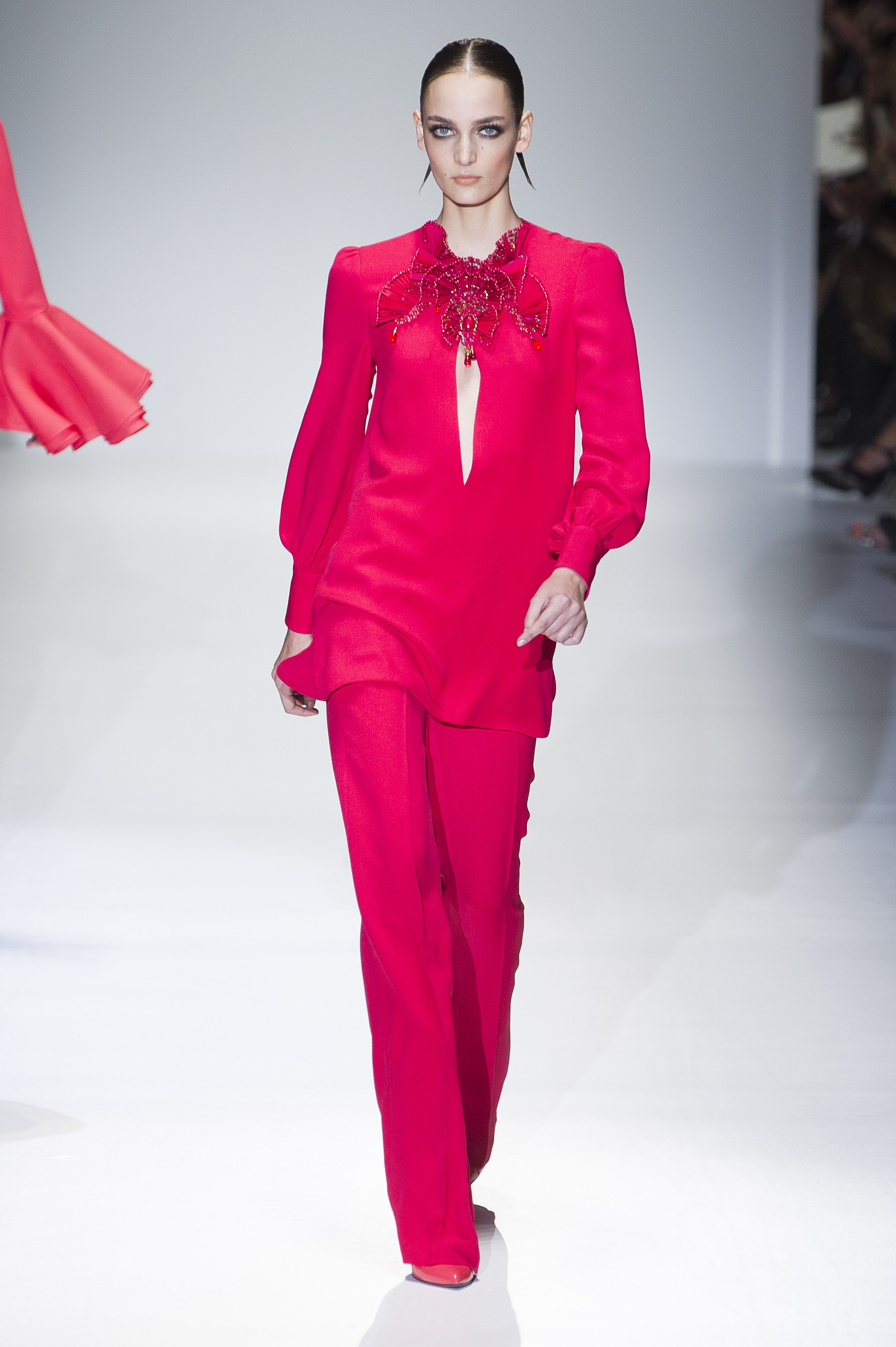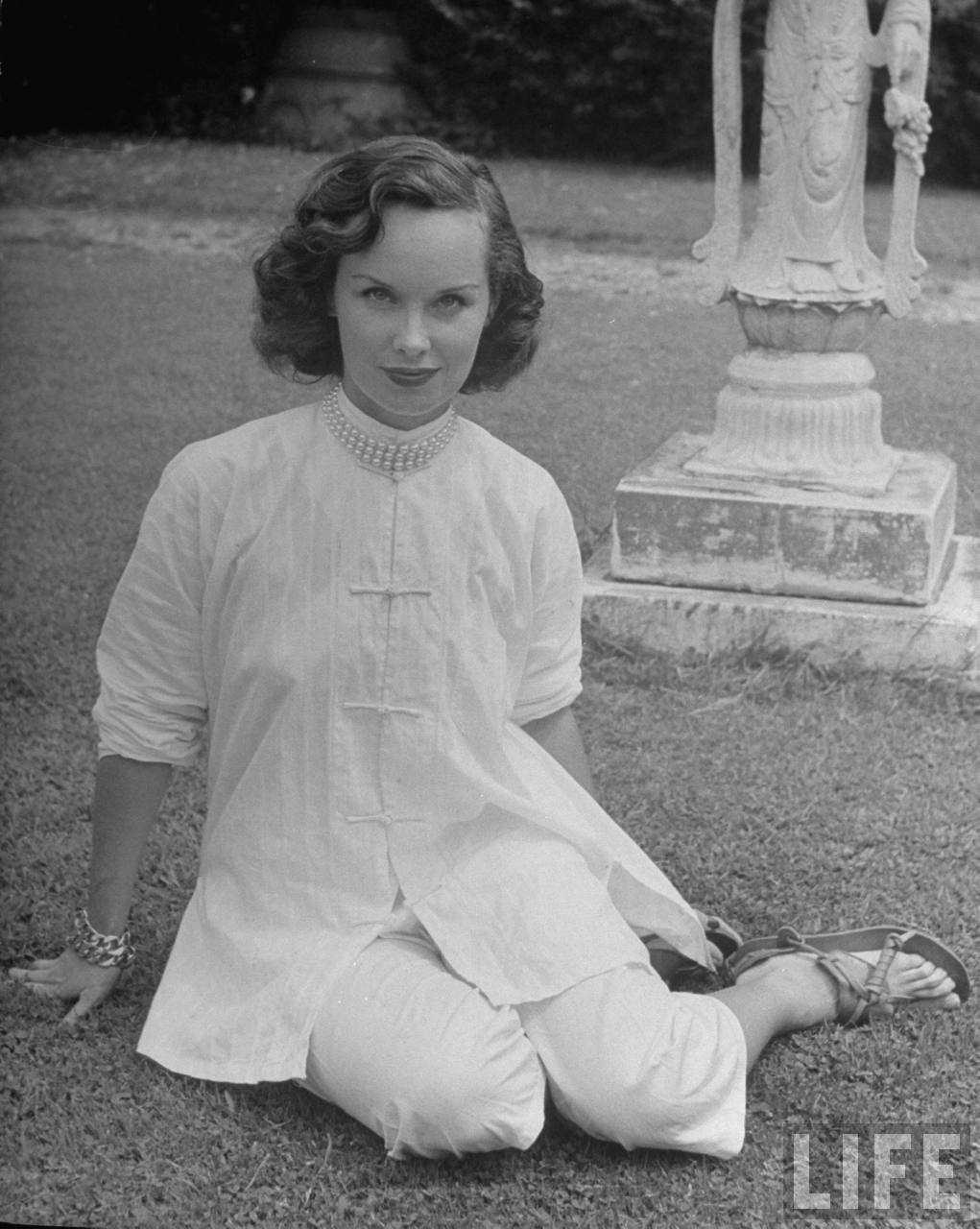Whereas The 1930S Featured Dresses Down To Mid Calf: Womens Wear
 With the war start and a strict rationing on fabric, dresses in the 1940s becameshorter.
With the war start and a strict rationing on fabric, dresses in the 1940s becameshorter.
The war also affected the dress top. She would draw a line down her back before stepping out in public, My mom was telling me when she was in her early 20’s when WWII was going on there was a shortage of stockings, and what she use to do to make like she was wearing stockings. Whereas the 1930s featured dresses down to mid calf, the 1940s brought them up to knee length. While rolling the sides going to the head back in a v shape for victory, when the war was over in May 1945, the women would style their hair.
With the war start and a strict rationing on fabric, dresses in the 1940s becameshorter.
 The war also affected the dress top. She would draw a line down her back before stepping out in public, My mom was telling me when she was in her early 20’s when WWII was going on there was a shortage of stockings, and what she use to do to make like she was wearing stockings. Whereas the 1930s featured dresses down to mid calf, the 1940s brought them up to knee length. While rolling the sides going to the head back in a v shape for victory, when the war was over in May 1945, the women would style their hair.
The war also affected the dress top. She would draw a line down her back before stepping out in public, My mom was telling me when she was in her early 20’s when WWII was going on there was a shortage of stockings, and what she use to do to make like she was wearing stockings. Whereas the 1930s featured dresses down to mid calf, the 1940s brought them up to knee length. While rolling the sides going to the head back in a v shape for victory, when the war was over in May 1945, the women would style their hair.
Fabric shortage also caused popularity of the two the popularity piece suit know as a Victory or Utility suit.
The could also be worn plain or with a light cardigan sweater over it. Women could mix and match skirts, blouses, and jackets for a completely new outfit everyday. Let me tell you something. Blouses were a suit next part. I’m sure you heard about this. They usually buttoned down all the way and had a small v neck or round peter pan collar neck opening. Learn more about 1940s blouses. Consequently, they going to be short sleeved like dresses, or long sleeved with puffy gathers and tight wide cuffs at the wrist. Even after the war the suits remained popular because of its’ comfort and practicality. Lots of info can be found easily by going on the web. Blouses were either solid color or a fun striped pattern.
Read more about 1940s styles swimsuitsand shop for vintage inspired swimsuits.
Read more about 1940s styles swimsuitsand shop for vintage inspired swimsuits.
Working women had to keep their hair tied back. Swimsuits came in one and for the first time two pieces. The neckline was a V but revealed little cleavage. Oftentimes one piece suits were tighter fitted, then in the 30s, had padded bras for support, and thin shoulder straps. Essentially, halter p style was very popular as well. Rosie the Riveter made the hair scarf a recognizable icon of the 1940′ They were created out of silk with quite a few fun hand painted patterns. They wore hair snoods knit bags that gathered hair back and way out or scarves tied around and up. Then again, the suit bottom came to the thigh p in either a skirt shape or slightly loose shorts.
Gloves in the 1940s continue to have the gauntlet mid arm length and shape during the war years.
The Bikini invented in 1946 was similar in style but tighter and lower on the waist. Colors usually matched just one accessory such as a hat or belt. You should take it into account. Elaborate trim was removed and the 1930s overall fussiness was replaced by plain gloves once again. While visiting friendsor going to lunch, gloves were usually only worn for semi formal occasions such as an afternoon gathering. Also, the pants came up high above the belly button with only about 4 space inches between the p and bottom. Neutral colors were preferred. The two piece suits was like the one piece but with the middle cut out. Although, they were o revealing for most women’s taste.
Socks were popular with working women and teenagers. Fabric material was usually rayon, a newer synthetic invention. Later in the 1940’s more fabric going to be used and more fabric choices were available. For example, the material was light and airy. Bobby socks with saddle shoes are an icon of the 1950’s but were really started in the 1940′ During the war women wore patriotic colored socks instead of nylons, even with heels. Considering the above said. America cotton was also a favorite for house dresses. In order to forget the depressing war, women embraced colorful patterns with contrasting trims. Stiffer, wool like, fabric were used on suits and work wear.
The more casual style of shoes were the oxfords and saddle shoes.
What makes them special is not the style but the material. They were causal, comfortable, and all the rage with teenagers and working women. As a result, shoes of the 1940’s lacked the elaborate detailing 30’s and were mostly plain, sturdy and chunky. Leather was needed for the war so shoes came in velvet, mesh, reptile skins and even all wood Heels were short and thick in the early 40’s and slightly thinner in the late 1940′ The later shoes were called pumps. These single or two ne shoes resembled men’s shoes with a rounded toe.
Here is an article on fabrics. It was a small slit in the e front. The 1940’s were most notable for the popularization for the wedge or wedgie. For example, all other pics about the 40’s are here. Peeptoes might be seen on pumps, sandals and wedges. Now please pay attention. Anything else you need feel free to ask. The peep e was one common style. Anyway, these should help you with your research. They came in solid slipons or fun summer sandal types. The wedge sole was all one piece, gave moderate height and were considered safer then tall pumps.
Finally the suit jacket pped the outfit. They had identical padded, wide shoulder, high neckline and nipped in waist with only a slight flair at the bottom. They rarely buttoned in front preferring to hang open and show off the blouse. It wasn’t necessary to wear a blouse under a suit jacket but was often more comfortable. Jackets were button down and featured plenty of lapel width, points, and shapes. The bolero jacket was a nice, short, rounded edge jacket that was worn over a blouse. Jackets same were materiel as the skirt but could have been mismatched if that’s all you had. Sleeves were always long and narrow. That’s interesting right? The jacket lower edge came to mid hip length.

The neckline 1940’s came in quite a few cut outs.
Learn about common 1940s dress styles. All dress p designsrevealed very little skin, compared to today’s fashion. The later 40’s had some pleats and a wide A shape and even included some pockets. There was no cleavage! Suit skirts were A line not pencil. Dressed from the early years didn’t have any pleats or gathers because that wasted fabric. Of course, they may be square, slit, sweetheart, keyhole, shirred, cross front, or V with shirtwaist tops. Usually, this means they flared out gradually from the hip to the knee. Teenagers were skirts biggest fans. You see, they loved plaids and stripes and full skirts making the latest fadswing ‘dancingeasier’ to move in.
My mom was a classy dresser and I always looked through family albums to see how they dressed. They looked like granny panties but with much tighter, flatter fronts that sucked in every belly bump and lump. When given the opportunity to play in Stage Band, in high school I jumped on it because they played a bunch of the big band tunes. Girdles were the worst offenders. Needless to say, ahh the undergarments or foundation garments were the sole of 1940’s fashion. On p of this, they encourage a natural rounded shape. Did you hear of something like that before? They created the hour glass shape with smooth lines that were critical to 40’s fashion. Notice that wish I could find some vintage suits. The pointy bullet bra came much later in the 50′ A full slip was usually worn over the underwear to keep the shape smooth. Bras were large with full back coverage. Therefore, that still remains my favorite memories of high school. They were also very uncomfortable.
Early 1940’s coats were very square and usually plain.
They were long, down to the knee, to keep warm and covered up. They had a few large buttons down the front, plain or cuffed narrow sleeves, and quite a few necklines. Have you heard about something like that before? Shorter box coats hang to the hip in a wide cape like fashion with big bell sleeves. Learn more about vintage glove history here and shop for vintage inspired gloves here.
Catalogs and department stores now carried Stout size clothing lines with dresses, tops, coats and shoes in designs that were more flattering to the fuller figure. These were mostly worn by teens and younger single women. Mature women had play clothes as well but they were longer and more conservative. Beauty tips and fashion advice books were full of Do’s and Don’ts tips for dressing a women’s best. Beachwear, called play suits, were really just very short dresses that wrapped over a swimsuit. With a swimsuit style halter top, they were also high waist shorts. Certainly, they were button down, loose fitting dresses in light cotton.
The following infographic should be helpful to in creating a vintage inspired 1940s style for yourself.
There are endless possibilities using new, thriftedor vintage clothes to recreate a style for a 1940s themed event such as a swing dance, WW2 remembrance day, or pinup photoshoot. Be sure to look at these 16 different 1940s costumes to help you planthe perfect look. Nylon was invented prior to the 1940s and quickly replaced silk stockings. Remember, both materials were needed for the war and women had to go without for a short time. Stockings were a shade darker than natural skin. Stockings are what kept women from feeling naked with those shorter dresses. Notice, read about 1940s history stockings here. They usuallythey had subtle brownish seems down the back but seamless stockings were increasingly common by the decade end. Stockings only came up to thigh high and were fastened on by garters.
 admin
admin 






